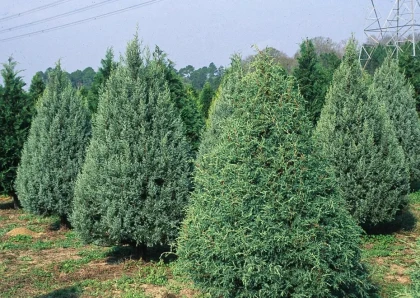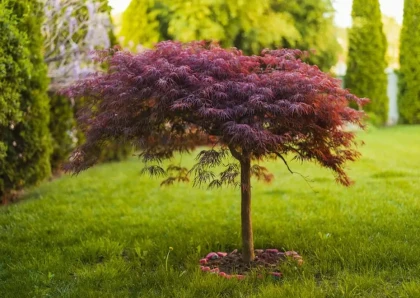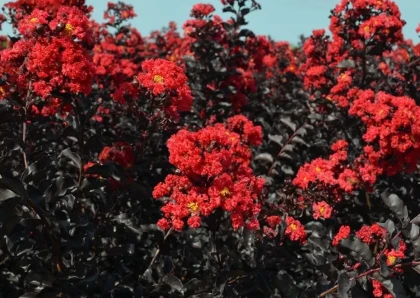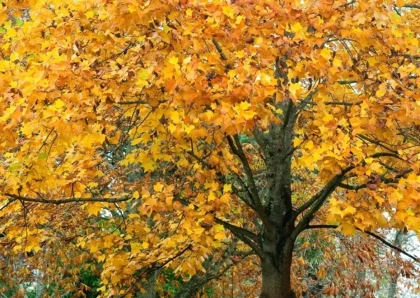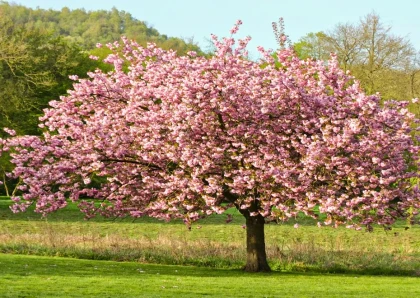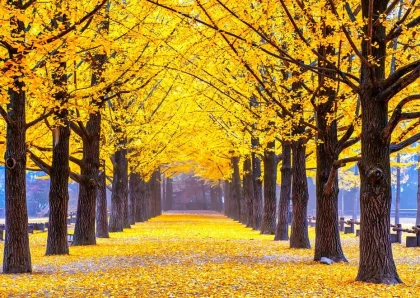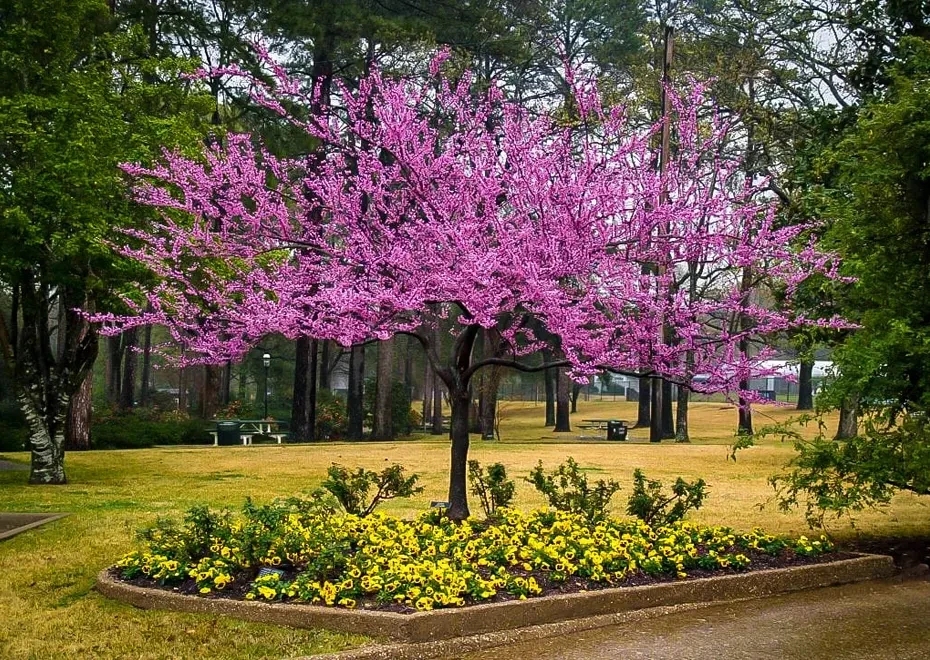
Forest Pansy Redbud Tree
Overview
History of the Tree
The Forest Pansy Redbud (Cercis canadensis 'Forest Pansy') is a small deciduous tree that belongs to the Fabaceae family. It was first discovered in the eastern regions of North America and has been cultivated for its ornamental qualities since the 1960s. The tree was named after its striking purple foliage, reminiscent of the pansy flower.
Detailed Description of the Tree
The Forest Pansy Redbud is known for its attractive aesthetic features. It typically grows to a height of 20 to 30 feet (6 to 9 meters) and has a spread of 15 to 25 feet (4.5 to 7.6 meters). The tree has a rounded crown and produces heart-shaped leaves that start as burgundy or reddish-purple in spring, gradually transitioning to a deep green color in summer, and finally turning yellow or red in autumn. In early spring, it bears small, pink to lavender-colored flowers on its bare branches before the leaves emerge.
Types of This Tree
The Forest Pansy Redbud is a cultivated variety of the Eastern Redbud (Cercis canadensis). While there aren't different types of Forest Pansy Redbud, there are other varieties of Eastern Redbud that exhibit variations in foliage color, growth habit, and flower color.
Importance of This Tree
The Forest Pansy Redbud holds significant importance in landscaping and horticulture. Its vibrant foliage and beautiful flowers make it a popular choice for ornamental gardens, parks, and urban landscapes. It adds visual interest throughout the seasons and attracts pollinators, such as bees and butterflies, with its early spring flowers.
How to Care for This Tree
To ensure the healthy growth of a Forest Pansy Redbud, it is important to provide the following care:
- Plant the tree in well-drained soil in a location that receives full or partial sunlight.
- Water the tree regularly, especially during dry periods, to keep the soil moist but not waterlogged.
- Apply a layer of organic mulch around the base of the tree to retain moisture and control weeds.
- Prune the tree during late winter or early spring to remove dead or damaged branches and maintain its shape.
- Fertilize the tree in early spring with a balanced slow-release fertilizer to promote healthy growth.
Benefits of the Tree
The Forest Pansy Redbud offers several benefits:
- Enhances the aesthetic appeal of landscapes with its vibrant foliage and delicate flowers.
- Provides shade and shelter for smaller plants and animals.
- Attracts pollinators, contributing to the ecological balance.
- The heart-shaped leaves create a unique visual appeal.
- The tree is relatively low-maintenance once established.
How to Plant This Tree
Follow these steps to plant a Forest Pansy Redbud tree:
- Choose a suitable planting location with well-drained soil and adequate sunlight.
- Dig a hole that is two to three times wider than the root ball of the tree.
- Place the tree in the hole, ensuring that the top of the root ball is level with or slightly above the ground surface.
- Backfill the hole with soil, gently firming it around the roots to eliminate air pockets.
- Water the tree thoroughly after planting and apply mulch around the base to conserve moisture.
Different Types of Wood Products That Can Be Made From This Tree
The wood of the Forest Pansy Redbud is not typically harvested for commercial purposes. However, it is occasionally used for small woodworking projects, such as decorative crafts, inlays, and turned items like pens or small bowls. The wood is known for its tight grain and attractive reddish coloration.
Cons
While the Forest Pansy Redbud is a beautiful tree, there are a few considerations to keep in mind:
- The tree may be susceptible to certain pests and diseases, such as cankers and leaf spots.
- Extreme temperatures or harsh winters can sometimes cause damage to the tree.
- It requires regular pruning to maintain its shape and promote healthy growth.
FAQs
1. Can the Forest Pansy Redbud tree tolerate shade?
The Forest Pansy Redbud prefers full or partial sunlight but can tolerate some shade. However, it may not produce as vibrant foliage or flowers in shadier locations.
2. When is the best time to plant a Forest Pansy Redbud tree?
Early spring or fall is the ideal time to plant a Forest Pansy Redbud tree. Planting during these seasons allows the tree to establish its root system before the onset of extreme weather conditions.
3. How long does it take for the Forest Pansy Redbud to bloom?
The Forest Pansy Redbud typically starts blooming in early spring, before the leaves emerge. The duration of the blooming period usually lasts for a few weeks.
4. How fast does the Forest Pansy Redbud tree grow?
The growth rate of the Forest Pansy Redbud is considered moderate. It can gain approximately 1 to 2 feet (30 to 60 centimeters) in height per year under ideal conditions.
No listings available
Related Products
Questions & Answers
What do you want to know about this product?
Reviews (5)
Arborista256
A Majestic Addition to any Landscape
The Forest Pansy Redbud's vibrant purple foliage adds a touch of elegance to my garden. Its early spring blooms are a delightful bonus.
TreeHugger99
Nature's Paintbrush in My Yard
The Forest Pansy Redbud's deep burgundy leaves transform my landscape into a masterpiece. Its unique beauty never fails to impress.
ArborealEnthusiast42
Captivating Color All Year Round
From its stunning purple leaves in spring to its fiery red foliage in fall, the Forest Pansy Redbud is a true showstopper. A must-have for any garden enthusiast!
LeafWhisperer69
Delicate Beauty in Every Season
The Forest Pansy Redbud's delicate pink blossoms and heart-shaped leaves bring joy to my garden. Its low maintenance nature makes it perfect for busy gardeners.
BranchMaster_1232u328
A Tree That Truly Stands Out
The Forest Pansy Redbud's striking purple foliage sets it apart from other trees. Its unique color and graceful form make it a standout choice for any landscape design.






